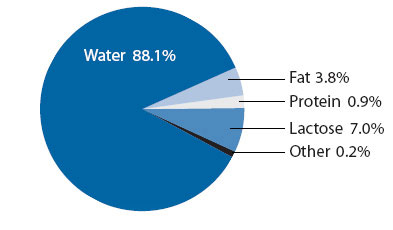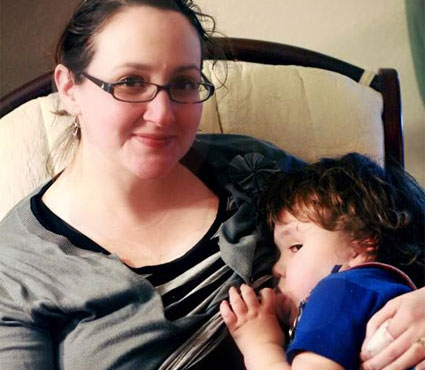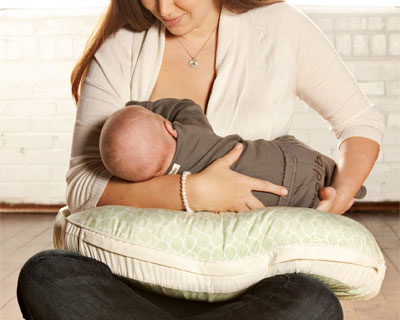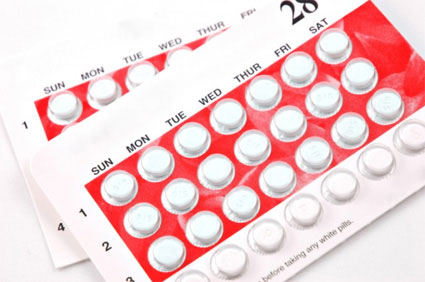One of the greatest concerns of most new mothers is whether her breastfed baby is getting sufficient milk or not. There are certain signs to look out for which will help you decide whether your infant is getting adequate feed or not. Here are the common signs to look out for. In this articleNumber of Wet DiapersColor of UrineBowel MovementWeight GainNumber of Wet Diapers A baby who is getting sufficient milk will have 4 to 6 wet diapers a day by the fourth day after birth. In case you are making use of cloth diapers she will have 6 to 8 wet diapers since cloth holds less.Color of UrineThe color of the urine is a clear indication of whether a baby is getting sufficient quantity of milk to keep her hydrated. Pale or water-colored urine suggests adequate hydration. Apple juice or dark colored urine after the first four days of a baby’s birth is a sign that the baby is not getting enough milk. Initially when an infant is learning to get breastfeed she may not be able to suck sufficient quantity of milk. This is one of the most common causes of dark colored urine in infants. In such cases it would be worthwhile to consult a doctor to find out if the baby needs extra milk during the time she is learning to get breastfeed.Bowel Movement If the quantity of stools is large it can only be an outcome of large intake of milk.Babies in age group of one and four weeks who are getting enough hind milk will produce at least 2-3 yellow, seedy stools a day. Breast milk is a natural laxative because of which many breastfed babies produce a stool with each feeding. This is an indication that the baby is getting sufficient milk. As soon as a baby turns 45 days old normally the frequency of her bowel movements will decrease. At this stage, the baby will usually have only one bowel movement a day. In fact some breastfed babies have one bowel movement in every 3-4 days. For tracking adequate growth in such babies other indications must be used instead of bowel movements.Weight Gain Normally your doctor will check your newborn’s weight gain a few days after you leave the hospital. Subsequently he may call your for a visit a couple of weeks later to check the baby’s weight. Here are some interesting points to note about an infant’s weight gain. Majority of babies irrespective of whether they are breastfed or bottle-fed, will lose an average of five to seven percent of their birth weight in the first days of life. This is considered normal and happens because of loss of excess fluid. The exact amount of weight loss will depend upon how plump the baby was at birth, how well she is nursing and individual variations in fluid retention. Babies who are slow to latch-on and breast feed efficiently tend to lose more weight initially as compared to those who feed frequently with a good latch-on. After regaining her birth weight, an average infant will gain 4 to 7 ounces a week, or a minimum of one pound a month. Some babies gain weight fast during the first months after birth itself while others may gain more slowly, but may still be within their normal body weight range. Breastfeeding depends a lot on the mother’s level of confidence. A constant fear that your baby is not getting enough milk will undermine your confidence to a very large extent. Hence if your baby is producing enough wet diapers, has regular bowel movements and is gaining weight regularly be assured that she is getting enough milk.
One of the greatest concerns of most new mothers is whether her breastfed baby is getting sufficient milk or not. There are certain signs to look out for which will help you decide whether your infant is getting adequate feed or not. Here are the common signs to look out for.
Number of Wet Diapers
A baby who is getting sufficient milk will have 4 to 6 wet diapers a day by the fourth day after birth. In case you are making use of cloth diapers she will have 6 to 8 wet diapers since cloth holds less.
Color of Urine
The color of the urine is a clear indication of whether a baby is getting sufficient quantity of milk to keep her hydrated. Pale or water-colored urine suggests adequate hydration. Apple juice or dark colored urine after the first four days of a baby’s birth is a sign that the baby is not getting enough milk.
Initially when an infant is learning to get breastfeed she may not be able to suck sufficient quantity of milk. This is one of the most common causes of dark colored urine in infants. In such cases it would be worthwhile to consult a doctor to find out if the baby needs extra milk during the time she is learning to get breastfeed.
Bowel Movement
If the quantity of stools is large it can only be an outcome of large intake of milk.
Babies in age group of one and four weeks who are getting enough hind milk will produce at least 2-3 yellow, seedy stools a day. Breast milk is a natural laxative because of which many breastfed babies produce a stool with each feeding. This is an indication that the baby is getting sufficient milk.
As soon as a baby turns 45 days old normally the frequency of her bowel movements will decrease. At this stage, the baby will usually have only one bowel movement a day. In fact some breastfed babies have one bowel movement in every 3-4 days. For tracking adequate growth in such babies other indications must be used instead of bowel movements.
Weight Gain
Normally your doctor will check your newborn’s weight gain a few days after you leave the hospital. Subsequently he may call your for a visit a couple of weeks later to check the baby’s weight. Here are some interesting points to note about an infant’s weight gain.
Majority of babies irrespective of whether they are breastfed or bottle-fed, will lose an average of five to seven percent of their birth weight in the first days of life. This is considered normal and happens because of loss of excess fluid. The exact amount of weight loss will depend upon how plump the baby was at birth, how well she is nursing and individual variations in fluid retention.
Babies who are slow to latch-on and breast feed efficiently tend to lose more weight initially as compared to those who feed frequently with a good latch-on.
After regaining her birth weight, an average infant will gain 4 to 7 ounces a week, or a minimum of one pound a month. Some babies gain weight fast during the first months after birth itself while others may gain more slowly, but may still be within their normal body weight range.
Breastfeeding depends a lot on the mother’s level of confidence. A constant fear that your baby is not getting enough milk will undermine your confidence to a very large extent. Hence if your baby is producing enough wet diapers, has regular bowel movements and is gaining weight regularly be assured that she is getting enough milk.

































